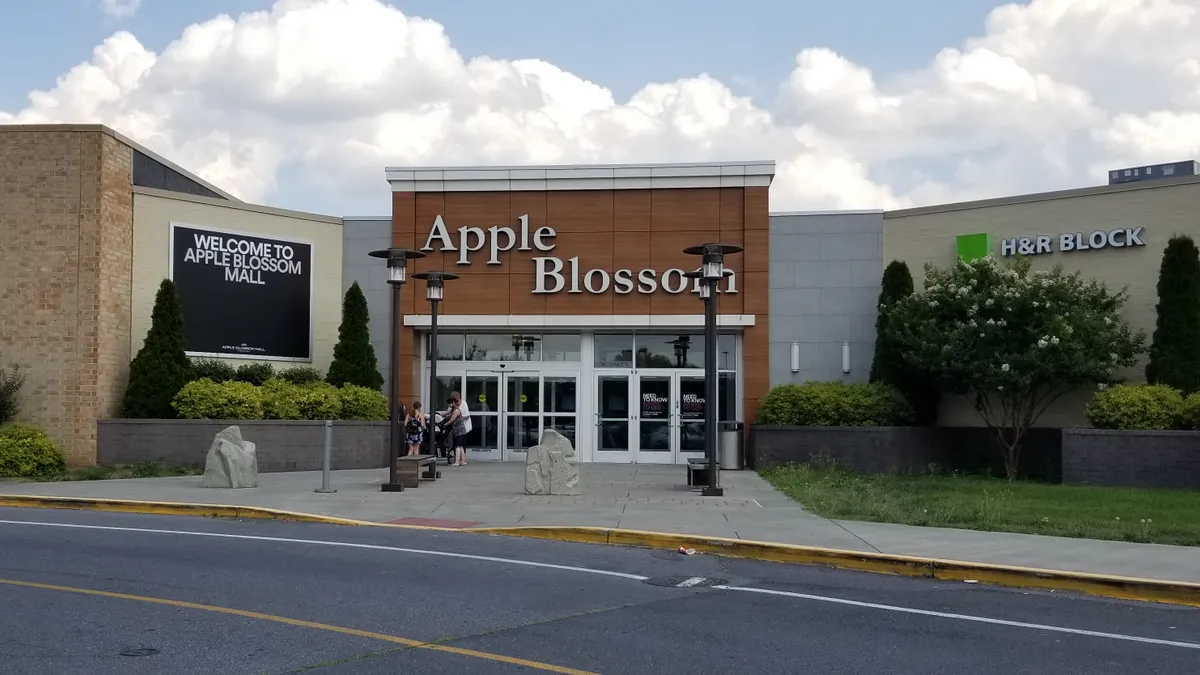Dive Brief:
-
Net operating income from Simon Property Group’s retail portfolio, which includes J.C. Penney and other retailers, fell 57% year over year in the second quarter to $50.2 million, according to an earnings presentation filed with the Securities and Exchange Commission Wednesday.
-
Overall at the company, funds from operations fell 1.4% year over year to $1.08 billion, and lease income rose 5% to $1.3 billion. Portfolio net operating income, which includes international properties at constant currency, rose 3.7%, while U.S. net operating income rose 3.3%.
-
Occupancy at the U.S. mall and outlet division rose 80 basis points to 94.7%, 30 basis points at its U.S. Taubman properties to 93.7%, and was essentially flat at its Mills division at 97.3%. Base minimum rent at U.S. malls and outlets rose 3.1% to $56.27 per square foot, at U.S. Taubman rose 1.6% to $61.58 and at The Mills rose 4.3% to $36.02.
Dive Insight:
The market value of Simon Property Group’s “other platform investments,” a stable of businesses apart from the REIT’s core real estate strategy, is valued at about $3.5 billion or roughly $10 per share, CEO David Simon told analysts Wednesday.
Along with a host of retailers now run by Sparc Group, which Simon co-owns with brand management firm Authentic Brands Group, and an investment in ABG itself, the portfolio includes J.C. Penney. Simon acquired the department store with Brookfield in 2020.
David Simon didn’t spell out how the valuation was determined, and Simon Property Group didn’t immediately respond to a request for clarification. Because the Simon-owned retailers themselves aren’t publicly traded, they’re not required to disclose their financial results. However, J.C. Penney’s revenue and earnings are reported to the Securities and Exchange Commission by a pass-through trust tasked with selling some of its property. Last year, Penney’s net sales fell 3.4% and net income fell 36.3%.
Simon’s estimate of the value of the retail portfolio could be based on some unknown variable, or combination of variables, according to Nick Egelanian, president of retail development firm SiteWorks.
“Maybe he’s calculating it by some metric based on their profitability, maybe he’s not,” he said by phone. “Maybe it’s based on the fact that it saves them from having to lose other tenants. It's unclear whether what’s included is the pure value of the retailers as ongoing chains, or some other value assignment.”
Thanks to rising rents and leasing momentum, Simon raised its full-year guidance Wednesday. But its chief executive acknowledged a level of volatility in the business. Some of that comes from running such a large entity, in contrast to smaller companies, like strip centers, and some comes from operating the retail and brand portfolio, according to David Simon. The company’s retail business “has been more back-end weighted than we originally anticipated,” he said.
UBS analysts Michael Goldsmith and Ami Probandt noted that Simon’s retailers this year will need to generate some $335 million in order to meet the company’s stated goal of breaking even with last year’s net operating income. “Assuming 3Q'23 is slightly better than1Q'23, it implies a large contribution in 4Q'23,” they said in a research note Wednesday.
But smaller REITs and strip center companies tend to be less stable than a large company like Simon, Egelanian said. More broadly, volatility, including seasonal unpredictability, is perennial in the retail industry, and runs counter to the relative stability of real estate, he also said.
“REITs were never supposed to own retailers. REITs are supposed to be bond-like,” he said. “Of course owning retailers is more volatile than running a bond backed by property.”














